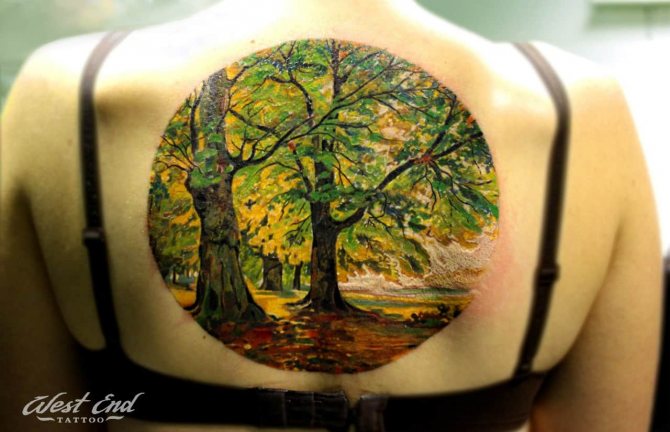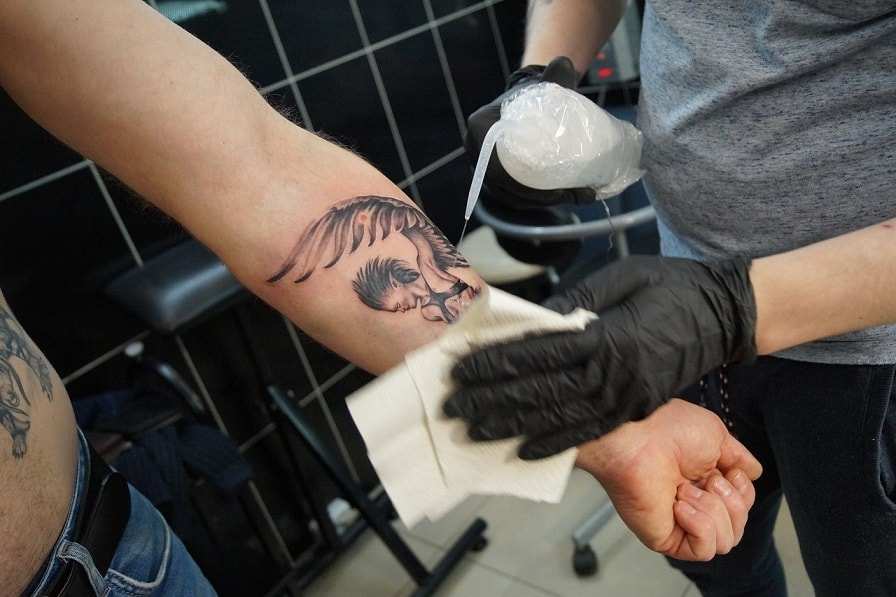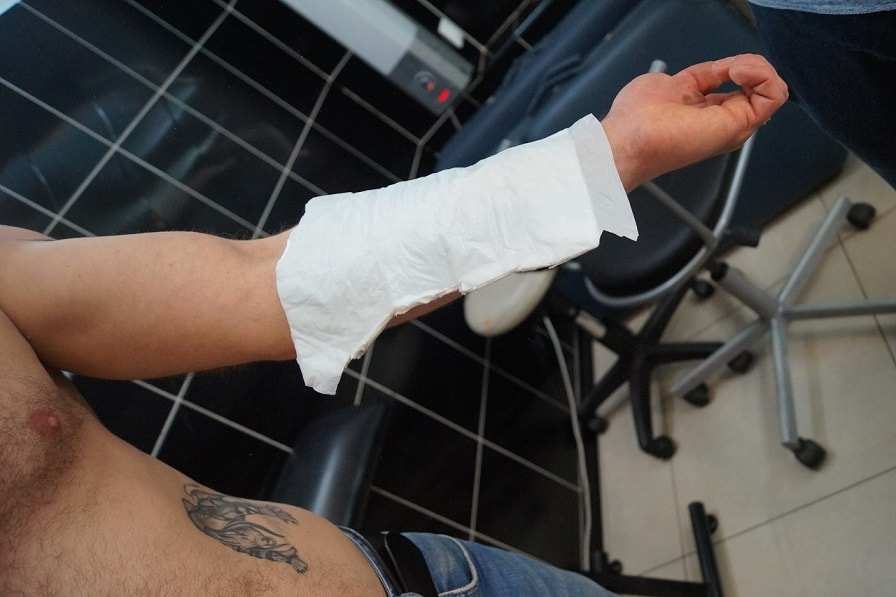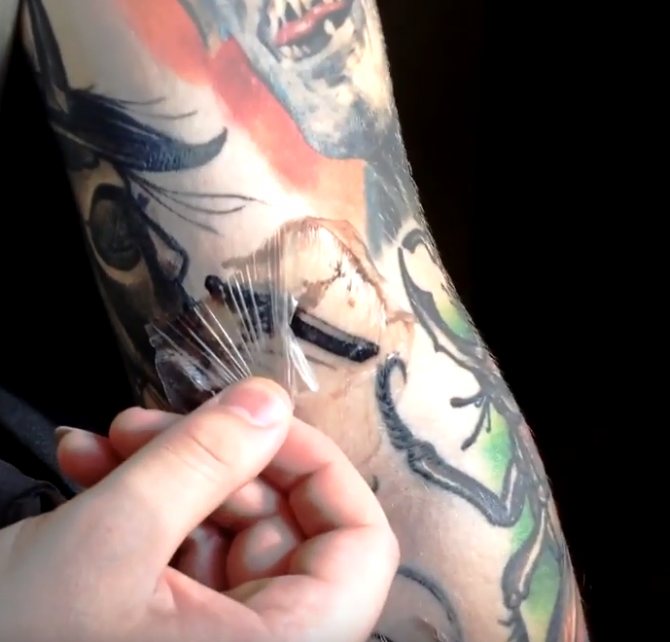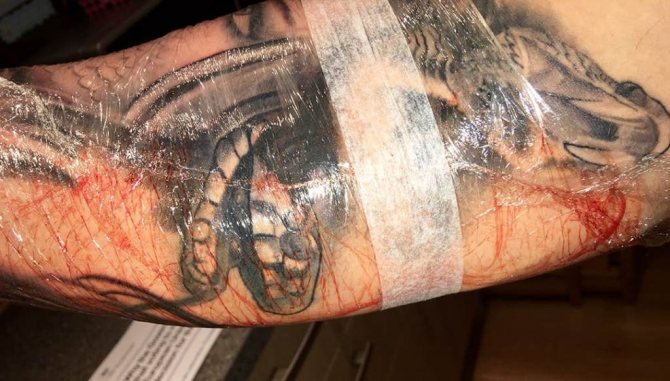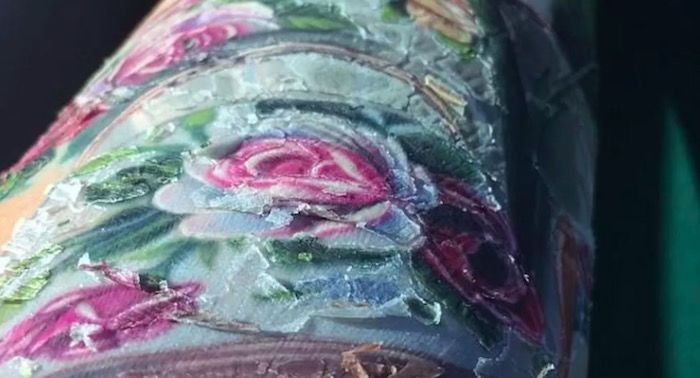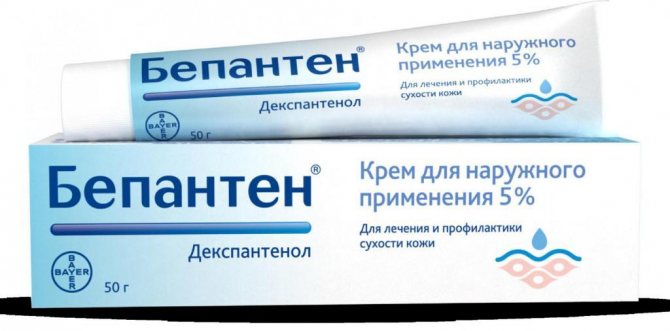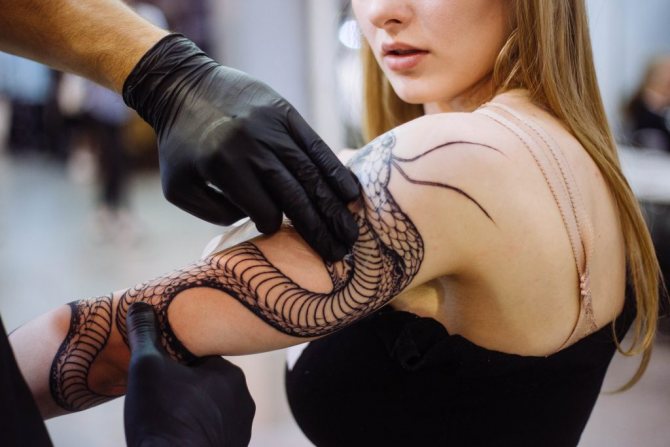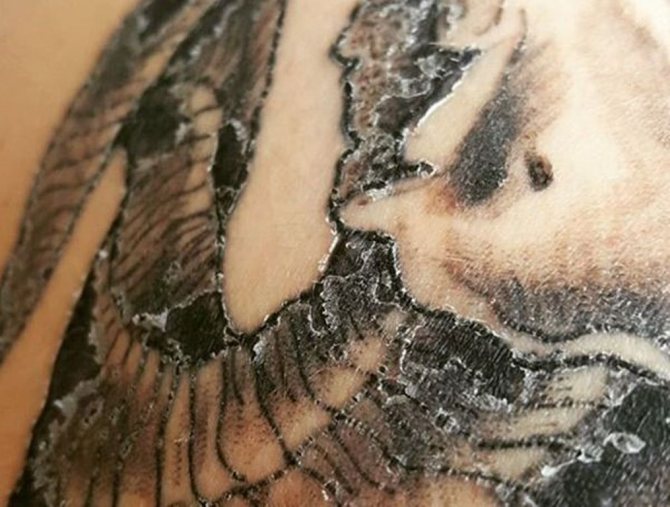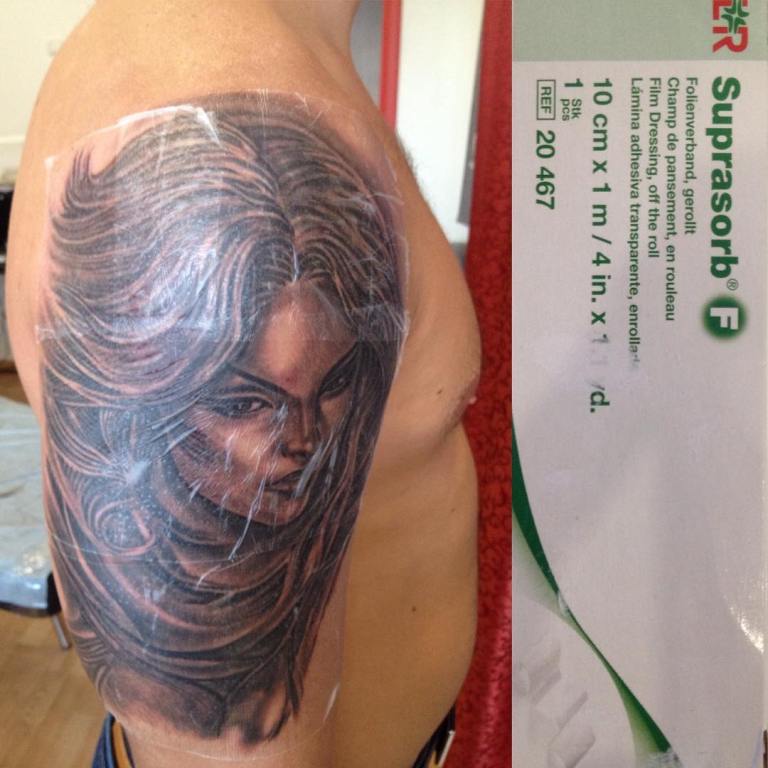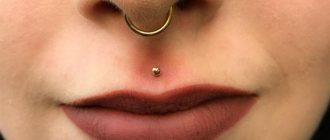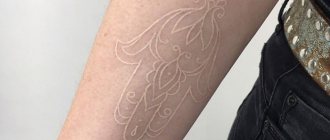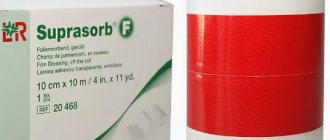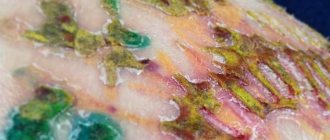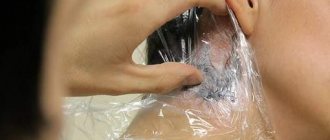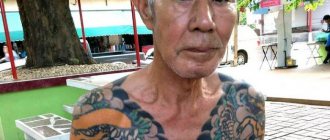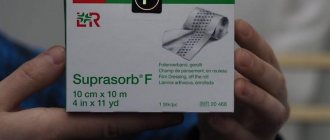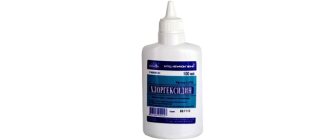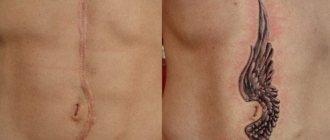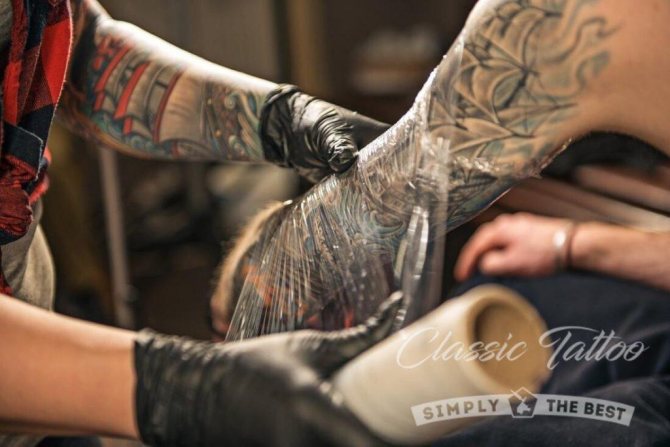
A tattoo in terms of medicine is a trauma to the skin with a stabbing object. A needle makes a puncture in the upper layer of the skin to deliver the pigment to the dermis. The depth of insertion of the tattoo needle is up to 1 mm. After injection, the dye is distributed throughout the damaged layer and is perceived by the body as a foreign body. The pigment particles begin to be absorbed by activated phagocytes of the immune system.
After the completion of the master tattoo begins to heal and the further success of the procedure depends only on compliance with the rules of care.
Process of healing of tattoo
Each person's skin reacts to the appearance of a tattoo in its own way. How long the healing period will last depends on factors such as:
- The location of the design. The healing process is easier if the pattern is located on the abdomen, thighs, buttocks or breasts. If exposed areas such as the neck, ankles, fingers - complete regeneration may take longer.
- The area of the pattern. The larger it is, the longer the recovery period.
- Thickness of lines. Thin lines heal faster, as they contain less paint. You should not write off and individual characteristics of the human body, his age, the presence of chronic diseases, etc.
What to do if a tattoo heals too slowly
Improper and too long healing of a tattoo can be observed in the following cases:
- Peculiarities of the body, slowed metabolic processes in the skin, implicit chronic skin diseases.
- Violation of recommendations for the care of the injured skin area, the introduction of infection through the injured skin.
- Low level of professional training of the master.
If the tattoo does not heal for a long time, it is necessary:
- Provide free breathing to the tattoo area, because the contact of damaged skin with the tissue interferes with healing. Free breathing is provided extremely carefully, without touching foreign objects and even more so without interaction with pets;
- treat the tattoo area with an antiseptic, such as chlorhexidine;
- After treating the skin area with an antiseptic, apply an anti-inflammatory ointment not more than twice a day.
If the above recommendations did not improve the situation, it is necessary to consult a dermatologist and inform the tattoo studio.
Tattoo care after application
For the loss of the coloring pigment to be minimal and the "before" and "after" photos of the tattoo, made with a difference of several years, to be happy, it is important to properly care for the damaged skin in the first days. Specialists may take different approaches, but the generally accepted recommendation is:
- In the evening or the next day, you should remove the protective film that the handyman has glued on. Some recommend then rinsing the irritated skin with antibacterial soap. Rubbing the application area is not allowed, lying in a hot bath - too.
- After the hygienic procedure, you need to remove the moisture with a clean towel and treat the drawing with a special cream for healing.
In no case can you scratch the tattoo and deliberately remove the flaky skin. Also in the first 7 days after the drawing is not recommended to go to the bath, sauna, pool, swim in bodies of water, tan.
How a tattoo heals in days with proper care
The type of care depends on what kind of compress was applied to the tattoo, if it is a healing film, then no manipulation for 5-6 days is required.
The main stages of healing:
| Stages | Duration | Features |
| Occurrence of crusts | Observed for 1-2 days after the procedure | It is a natural process; the liquid that appears may be transparent or contain a mixture of colored pigment. |
| The formation of a protective crust | Lasts up to 4 days | It is strictly forbidden to pluck or scratch this area. |
| Flaking | May last anywhere from 5 to 10 days | The crust on the tattoo begins to gradually peel off. Regeneration is accompanied by a slight itching sensation. |
Once the crusts are completely gone, the tattoo is considered completely healed. If there is residual inflammation, the area should continue to be treated with healing ointment or regularly moistened with Chlorhexidine.
Miramistin is often prescribed as an antibacterial agent.
Choosing a tattoo healing product
The first treatment of a tattoo with anti-inflammatory cream is done in the salon. The master shows how the finished drawing looks and after obtaining the client's approval, applies the healing agent on it, and glues a protective film on top.
For further treatment, you need to buy a wound-healing cream and use it to care for inflamed skin 1-2 times a day. When choosing a remedy, you need to pay attention to the fact that it contains one or more active ingredients:
- Regenerating components, such as provitamin B5. This is one of the most effective wound-healing components. It helps to improve metabolic processes in damaged tissues, so that skin recovery is faster.
- Antibacterial compounds, such as chlorhexilin, to avoid infection of the damaged skin.
It is desirable that the tattoo healing cream does not contain perfumes and dyes, which tend to irritate the damaged skin.
Bepanten Plus cream for unhealed tattoos
For the treatment of unhealed tattoos can be used cream "Bepanten Plus". Due to the content of provitamin B5 and chlorhexidine it disinfects inflamed skin, stimulates the regeneration process. Its cooling effect soothes pain.
Cream "Bepanten Plus" is easy to apply and quickly absorbed, does not leave a greasy residue on clothing and skin.
Healing remedies
During the first few days after the procedure, the crust on the tattoo needs special care. The master can recommend both drugstore remedies and professional cosmetics. Medications prevent the growth of bacteria, and also contribute to the healing of the wound.
Professional products alleviate the symptoms of inflammation, they create a protective film, but at the same time moisturize the skin, which eliminates the feeling of tightness. All remedies used have a safe composition, and the recommended products must have a license.
Ointments
The most commonly prescribed drugs are Bepanten and Panthenol, there are also analogs Traumel C, Solcoseryl. These anti-inflammatory agents are applied with a thin layer to the skin, promoting its regeneration. In order to prevent infection, there are ointments based on the antibiotic batriacin, but they are used only on the recommendation of a specialist. In the pharmacy can offer Baneocin ointment, it also has Bacitracin in its composition.
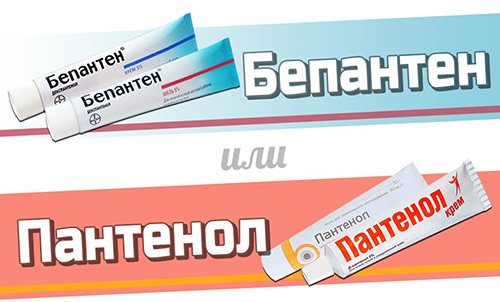

With the use of healing ointments, the bark on the tattoo will quickly go away
Professional ointments do not absorb as quickly, allowing for fewer applications.
The most popular products in the tattoo industry are:
- Dr. Pro;
- Tattoo Revive;
- Druid Tattoo healing balm;
- Tatoo Goo.
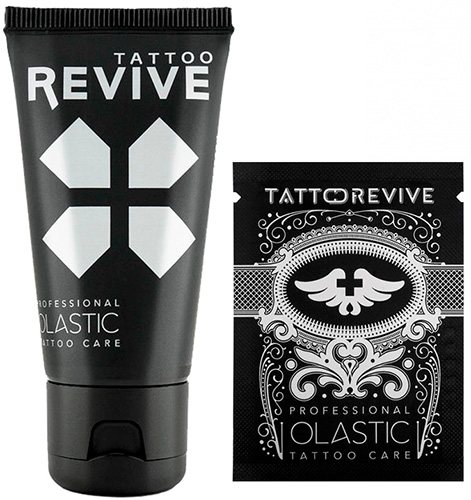

The basis of the composition of such products includes Chlorhexidine, Panthenol, vitamins, plant extracts and oils.
Healing film
Special films, thanks to their breathable structure, eliminate the need to wrap the skin with compresses, treat the wound with ointments and sprays, and regularly change bandages. The film is removed after the crust on the tattoo begins to come off naturally. The tattoo film has a breathable structure, the film itself does not perform a healing effect, it protects the wound from external irritants, thereby triggering the process of natural skin regeneration.
The film is tightly fixed on the skin, it does not need to be changed for 5-6 days, and the transparent coating allows you to monitor the healing process. After removal, the skin should also be treated with anti-inflammatory agents, for 3-4 days.
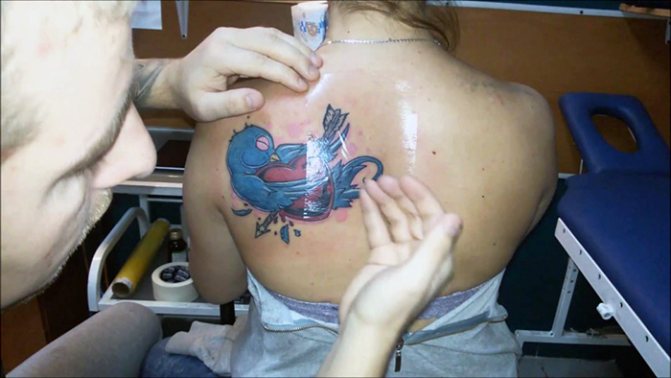

The crust on the tattoo using this method will be hidden under the adhesive sheet, which prevents moisture and tissue friction. The film is removed after the crust on the tattoo begins to come off naturally. However, sometimes the wound heals unevenly, some of the bloodstream may remain on the skin. The main task in this case - do not rip off together with the film this crust. More delicately and gently, it can be removed after preliminary steaming of the desired part of the body.
The main disadvantage of this method is the feeling of discomfort when removing, the protective film has an adhesive base. For insufficiently healed wounds, the process of peeling will be a little painful.
Popular types of films include:
- Suprasorb F;
- Tattoo Revive Protective Tattoo Film;
- EZ Derm Defender.
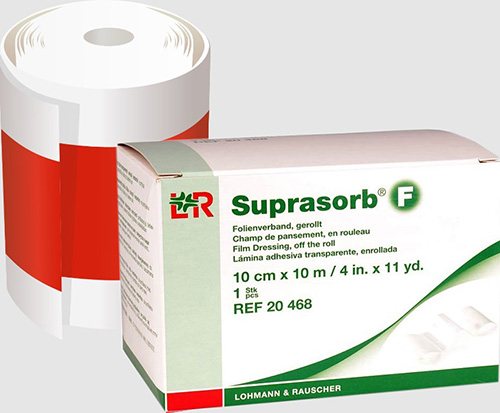

These products are sold both on a roll and as a cut. In a tattoo salon the master will select the necessary volume of the film. Application is not recommended for everyone, specialists often use this material for less voluminous and colored drawings. Due to the multicolor pigments, under the film it is possible to mix colors, which is not very aesthetically pleasing.
Special plasters
They are used only for fixing medicinal compresses during the period of healing. As a separate method for healing crusts on tattoos, adhesive tape is not used, because because of the abundance of glue together with the plaster can tear off and the protective layer of suppuration.
Stages of healing
Salon masters usually describe the process of tattoo healing to clients in this way:
- First day. The skin is swollen and inflamed. On its surface there is mucus with impurities of dye composition. This is a stained succour, not a washout of dye from the skin, as some people think.
- Day 2. No longer separates the succor. The skin begins to get used to the dye. An unpleasant feeling of tightness may occur. Creams that are used for healing - such as Bepanten Plus - can help.
- Day 3. A small crust forms on top of the tattoo. It may itch a lot. It should not be removed and scratched. To remove the discomfort, you can periodically pat the inflamed area lightly with the palm of your hand and apply wound-healing cream to it.
- The fourth or sixth day. Instead of a film appears "peeling" - the skin is severely flaky. The color of the image fades (but this is temporary!). There is no need to remove the "husk" - it must fall off by itself.
When tattoo stops to itize and peel, becomes homogeneous to the touch with surrounding healthy skin, it is possible to speak about successful healing.
How to take care of your skin so that no crusts appear after tattooing
Crusting on a tattoo is a natural wound healing process for anyone, so it is impossible to rule out the formation of a crust.
To alleviate the condition, the following requirements should be followed:
- Protection. After the tattoo session, the master imposes a protective cream and seals the area with a special absorbent film. Within 2-6 hours, this compress should be removed.
- Proper healing. After removing the film, the tattoo can be washed with baby or antibacterial soap, rubbing is not allowed. Then, the area should be blotted with an absorbent cloth and apply a healing ointment. For 2-4 days, treat the tattoo regularly every 6-10 hours. To prevent the protruding mucus from sticking to the fabric of clothing, it is necessary to put a special or children's diaper over the wound, it can be fixed with a medical plaster or masking tape.
- Care during the regeneration stage. After the suction layer dries out completely there is no need to make compresses, within 3 days it is enough to treat the tattoo with healing ointment.
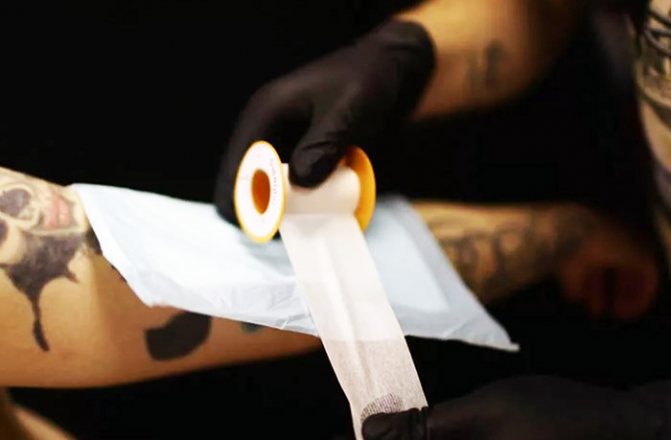

Compress for tattoo healing
During the recovery period, the skin is peeling, at this time you can not steam the wound, you need to wear loose clothing and avoid direct sunlight.
Prevention
To avoid severe inflammation of the skin after tattooing, you need to remember the rules:
- Compliance with the recommendations given by the master of the salon.
- Daily treatment of damaged skin with wound-healing cream.
- Careful attitude to the area where the tattoo is applied. Inflamed skin is not allowed to scratch, rub.
- Keeping unhealed tattoos clean and protected from the sun.
It is also important to eat right, so that the body gets all the vitamins and minerals it needs. This will have a positive effect on the regeneration process.
What not to do after a tattoo session
Crusts, if not cared for properly, can come off with some of the pigment, resulting in a dull and uneven design.
There are general recommendations on what to avoid after visiting the tattoo parlor:
- as well as before the procedure, during the healing period you should not drink alcohol, alcohol stimulates an increase in blood pressure, as a result of which the wound may bleed unnecessarily;
- To scratch the place of a tattoo, in the course of regeneration strong itching can arise, and if to influence on a site mechanically there is a probability of damage to a drawing;
- Exercise, it promotes profuse sweating, the excess moisture prevents rapid healing;
- too early removal of crusts from the tattoo site, this can lead to a skin infection;
- Visiting bodies of water, do not stay in the water for a long time, during the healing period, the pigment can be washed out, in addition, you can easily get an infection on the skin area that has not healed;
- In direct sunlight, it is possible to burn the paint.
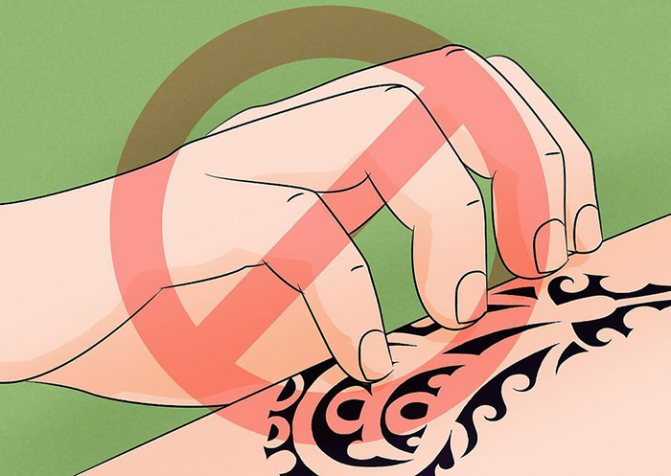

You should not scratch the tattoo during the healing process.
It is strictly forbidden to isolate the tattoo with plasters, bandages, and food film. This interferes with the normal regeneration process.
The crust on the tattoo appears due to the natural drying of the protruding mucus. If there is no oxygen to the skin, it may fester.
How do I know if a tattoo is fully healed?
The timeframe for complete healing of a tattoo is different for each person. The size of the tattoo also matters. A large tattoo, which is imposed for several seas, should heal in a month period (for example, chikano, or blackwork tattoo). After medium and small tattoos, the skin will recover in 1-2 weeks. The depth of the lines is also important, the deeper and wider the line, the longer it takes to heal.
Determining whether your tattoo is fully healed is quite simple: when you run your palm over it, you should not encounter any roughness or crusts.
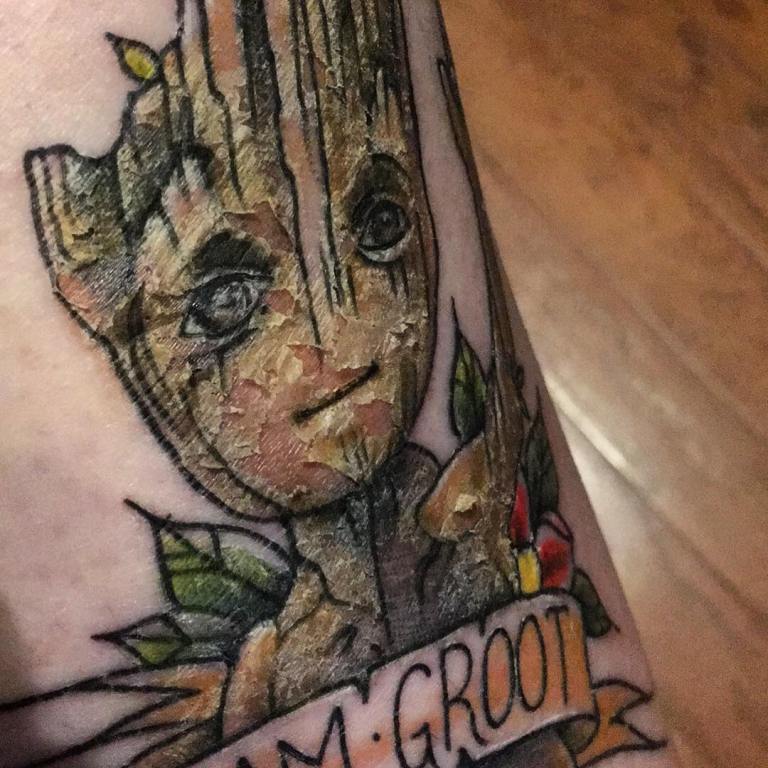

The design should look uniform and, most importantly, you should not feel any discomfort.
The technique of applying the tattoo. What happens to the skin
During tattooing, the needles enter the skin to a certain depth, and bring the pigment into the subcutaneous layer. The ink is then absorbed by the cells, which remains almost permanently.
This process can be divided into certain stages:
- Damage occurs to the top layers of the skin, connective fibers, cells, and blood vessels. Hemorrhage is observed.
- An inflammatory process begins in the affected area, the capillaries fill with blood and enlarge. There is redness, swelling, the damaged skin becomes hot to the touch.
- The body's immune system reacts to the situation and begins to activate its resources.
How long does it take for a tattoo to heal on my arm, leg or back?
The period of healing on different parts of the body has a different duration. Therefore, no master will be able to tell you the exact term in which complete healing will take place.
The main role is played by the difference in the structure of the skin on the tattooed area of the body. The recovery occurs longest on the palms, fingers and toes, because in these places, the skin is quite thin and with a small fat layer.
The approximate period is about 2 weeks. On the back, chest, abdomen and buttocks, the process is much faster, taking 4 to 7 days. The average time for the recovery of the epidermis after a tattoo can be considered 7-10 days.
The main rule for fast and proper healing is the strict observance of the recommendations of the tattoo master.
